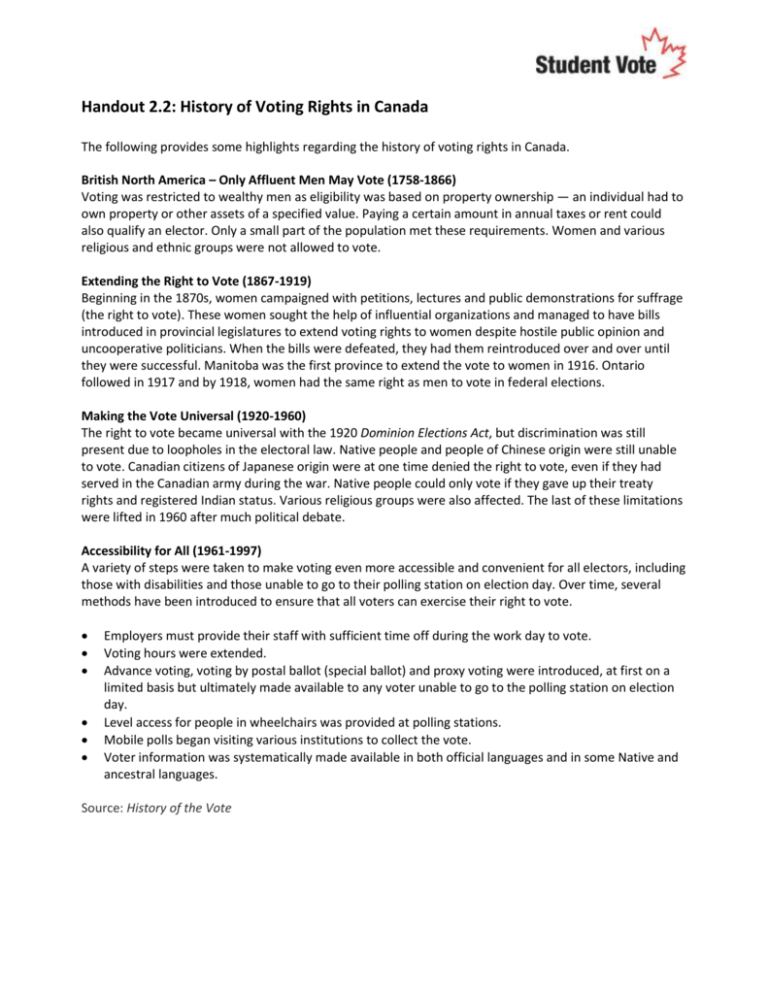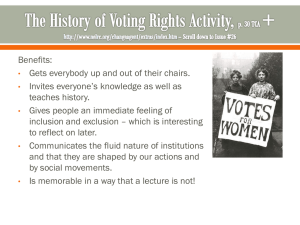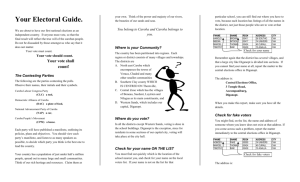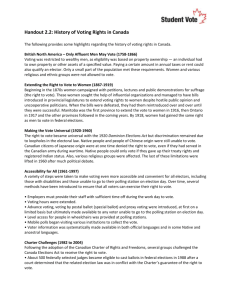Word - Student Vote
advertisement

Handout 2.2: History of Voting Rights in Canada The following provides some highlights regarding the history of voting rights in Canada. British North America – Only Affluent Men May Vote (1758-1866) Voting was restricted to wealthy men as eligibility was based on property ownership — an individual had to own property or other assets of a specified value. Paying a certain amount in annual taxes or rent could also qualify an elector. Only a small part of the population met these requirements. Women and various religious and ethnic groups were not allowed to vote. Extending the Right to Vote (1867-1919) Beginning in the 1870s, women campaigned with petitions, lectures and public demonstrations for suffrage (the right to vote). These women sought the help of influential organizations and managed to have bills introduced in provincial legislatures to extend voting rights to women despite hostile public opinion and uncooperative politicians. When the bills were defeated, they had them reintroduced over and over until they were successful. Manitoba was the first province to extend the vote to women in 1916. Ontario followed in 1917 and by 1918, women had the same right as men to vote in federal elections. Making the Vote Universal (1920-1960) The right to vote became universal with the 1920 Dominion Elections Act, but discrimination was still present due to loopholes in the electoral law. Native people and people of Chinese origin were still unable to vote. Canadian citizens of Japanese origin were at one time denied the right to vote, even if they had served in the Canadian army during the war. Native people could only vote if they gave up their treaty rights and registered Indian status. Various religious groups were also affected. The last of these limitations were lifted in 1960 after much political debate. Accessibility for All (1961-1997) A variety of steps were taken to make voting even more accessible and convenient for all electors, including those with disabilities and those unable to go to their polling station on election day. Over time, several methods have been introduced to ensure that all voters can exercise their right to vote. Employers must provide their staff with sufficient time off during the work day to vote. Voting hours were extended. Advance voting, voting by postal ballot (special ballot) and proxy voting were introduced, at first on a limited basis but ultimately made available to any voter unable to go to the polling station on election day. Level access for people in wheelchairs was provided at polling stations. Mobile polls began visiting various institutions to collect the vote. Voter information was systematically made available in both official languages and in some Native and ancestral languages. Source: History of the Vote








